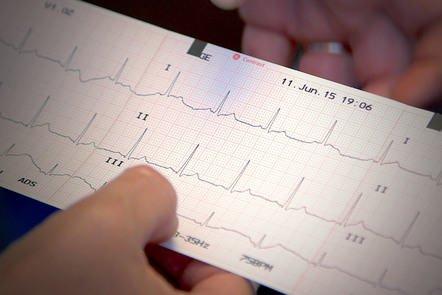MOOC List is learner-supported. When you buy through links on our site, we may earn an affiliate commission.

MOOC List is learner-supported. When you buy through links on our site, we may earn an affiliate commission.
Gain an introduction to ECG assessment and interpretation
This free online course will equip you with an introductory understanding of ECG assessment and interpretation, which will support the further hands-on training that is needed to competently perform the ECG test in clinical practice.
Over two weeks, you will be guided through a step-by-step approach to undertaking the procedure, including ECG lead placement, and how to deal with common challenges you may face in obtaining a high quality ECG reading. You will also explore the principles of electrophysiology, and how to recognise a normal heart rhythm, as well as signs of arrhythmia.
You will learn through demonstrations and interactive animations, and be able to check your knowledge and deepen your understanding through a variety of quizzes and peer discussion.
What topics will you cover?
- What are ECGs and why are they useful?
- How to record an ECG
- Troubleshooting and challenges in obtaining a high quality ECG
- Recognising normal sinus rhythm
- Introduction to arrhythmias
Learning on this course
You can take this self-guided course and learn at your own pace. On every step of the course you can meet other learners, share your ideas and join in with active discussions in the comments.
What will you achieve?
By the end of the course, you'll be able to...
- Explain the heart’s normal electrical activity and the meaning of the term ‘sinus rhythm’
- Describe an ECG and what it measures
- Discuss the reasons for recording an ECG
- Identify the steps involved in recording a standard 12 lead ECG, including electrode placement and the pre and post-procedure considerations
- Identify problems in obtaining a good quality ECG and suggest solutions to these
- Explain the relationship between the heart’s electrical activity and ECG waveforms
- Summarise the parameters for normal sinus rhythm
- Describe some key features of arrhythmias and their potential impact
Who is the course for?
This course is suitable for a range of existing healthcare providers, including qualified and student nurses, paramedics and support workers. It’s designed to give an introduction to ECG assessments and the process behind it. Anyone interested in ECG interpretation can benefit from this online course.
MOOC List is learner-supported. When you buy through links on our site, we may earn an affiliate commission.
MOOC List is learner-supported. When you buy through links on our site, we may earn an affiliate commission.
